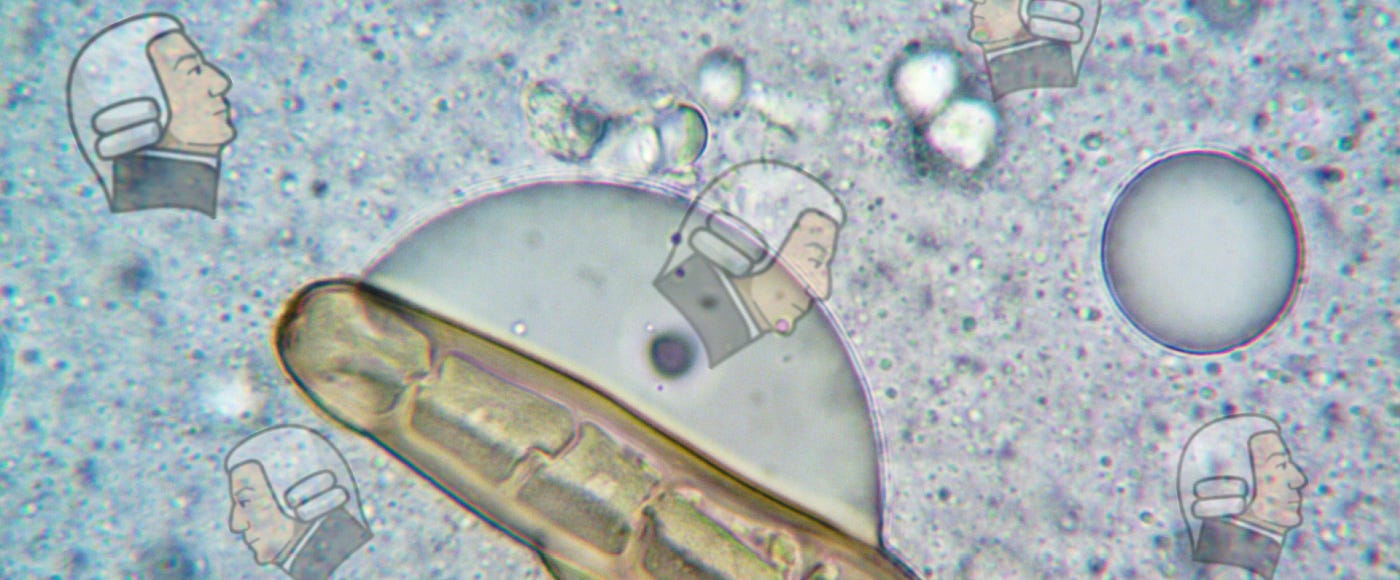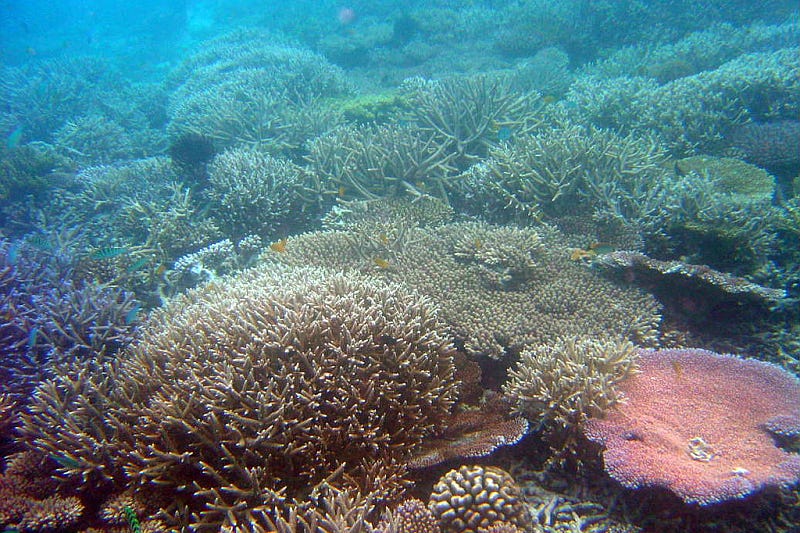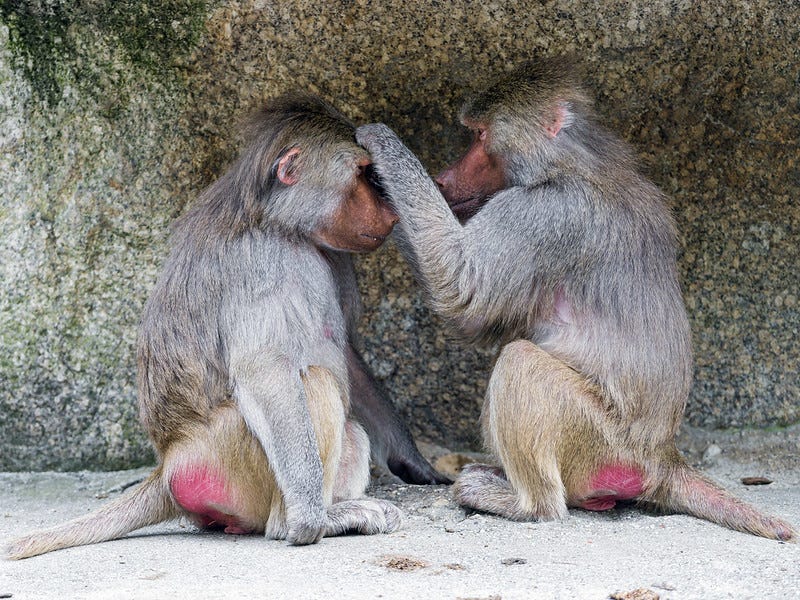Evolutionary economics – Part 1: Evolutionary origins of economic principles
That economics goes back further than the ‘father of economics’, Adam Smith, is not really contested. But might it go back way beyond the first humans, all the way to early life forms on our planet?

The term ‘economics’ is not always used with the greatest of precision. For some it is all about making profit (at the expense of someone else), for others it is concerned with facilitating trade (e.g., through free markets). But in essence, it is the study of the allocation of scarce resources. If all we needed and wanted were available in abundance, economics wouldn’t exist. Yet the vast majority of what we require is scarce, and requires sacrifices to obtain. We turn our scarce time and effort into money by working, and we turn scarce money into stuff – from food we convert into energy, to other needs and wants like security (a decent roof over our heads) and pleasure (Netflix). When resources are scarce, thriving becomes a matter of two things: being effective at obtaining them, and being efficient at consuming them. The better we are at allocating our available time and effort, the more money we have, and the less time, energy and money we waste, the more we have to spend on what we need and want. That is what economics, ultimately, is about. But is it just us, humans, who are concerned with scarce resources?
In the beginning, there was opportunity cost
Let’s look at one of the very earliest life forms: bacteria. These single-cell organisms emerged around 3.5 billion years ago, and those that were relatively better at using a limited resource (energy) to ensure they survived, flourished and passed on their genes would quickly have dominated the field. To function and grow (towards the next division), bacteria must synthesize proteins using molecular machines called ribosomes, each of which can produce different protein types. Some proteins break down nutrients (carbon) into energy and building blocks, others build amino acids (from nitrogen), and yet others are used to make more ribosomes. These are limited in number and can only produce one protein type at a time – a perfect example of a scarce resource. Escherichia Coli bacteria (E. Coli to their friends) adapt the ‘mix’ of the proteins it produces to its environment: if carbon is scarce, it ramps up production of those used to break down nutrients to make maximum use the available ingredient; if the nitrogen supply is limited, it will favour synthesizing those used for amino acid production. The cell effectively orchestrates its protein synthesis by allocating limited production resources, taking into account the opportunity cost of not investing in alternative protein types – much like a confectionery factory does today at the production line.

Fast forward a few billion years, and we find symbiotic systems, such as algae that live on and in corals. Through photosynthesis, algae combine the energy from sunlight with carbon dioxide into chemical energy (as carbohydrates), and they pass on some of that output to the coral. This provides it with a substantial portion of its energy and carbon needs to grow and repair itself, and carry out other life processes like reproduction, especially if the surrounding water is poor in nutrients. In return, the coral offers the algae the protection of its own tissues as well as inorganic nutrients, e.g. the ammonium it excretes, an important source of nitrogen for the algae. Both sides benefit by trading specific resources they can each efficiently produce in challenging environments. The result is a joint ability to support the energy demands, growth, and reef building beyond the capacity of either partner alone. There is a clear parallel with an economic exchange that generates a significant economic surplus, reflected in both sides’ increased biomass.
You want more sophistication? How about so-called mycorrhizal networks – a remarkable phenomenon, discovered by Canadian forest ecologist Suzanne Simard. These connect individual trees to each other through an underground network of fungi (the name comes from the Greek mýkēs, fungus, and rhíza, root), with a more than superficial similarity to neural networks in the brain, or indeed the internet (they were later dubbed the Wood Wide Web). Here too, trees provide photosynthesized carbon compounds, while the fungi supply water and nutrients like nitrogen and phosphorus. However, through the different connections, both trees and fungi appear to negotiate to determine the better suppliers, much like buyers and sellers do in the business world. Markets, 400 million years already – nature got there first.
Economic animal spirits
If this is what micro-organisms, fungi, plants and simple invertebrates are capable of, what might more complex animals have in store? In 1971, biologist and entomologist E.O. Wilson was among the first to study and describe eusociality – the highest level of social organization – in insects in Insect Societies. Many herd animal species exhibit degrees of socialization, with cooperative hunting or some resource sharing. However, with the obvious exception of separate roles for females and males, and sometimes a leadership role for a single individual in a group, individuals still tend to take care of all activities they need to survive, flourish and procreate. In contrast, insects like bees, wasps and ants evolved a genuine system of division of labour. Different ‘castes’ perform specialized roles that collectively and collaboratively support the colony’s survival, and make it operate as efficiently as possible. Common across all eusocial species is the clear separation between those concerned with reproduction (breeding and offspring care), and those who support them (foraging, defence, maintenance and construction). Early humans will likely have specialized to some degree, e.g., food acquisition, toolmaking and pottery, but it was really only in the middle of the 17th century that the concept started gaining traction, culminating in Adam Smith’s An Inquiry into the Nature and Causes of the Wealth of Nations in 1776… although it was approximately 300 million years after evolution came up with it.

Unsurprisingly, as the species come closer to humans, their behaviour can be even more sophisticated. Researchers including Ronald Noë and Peter Hammerstein, and of course Frans de Waal, have extensively documented complex market behaviour among primates. Grooming is widely treated as a currency, a tradeable commodity that can be exchanged for benefits ranging from access to food and social connection to higher-ranking individuals, to coalition support and mating opportunities. This then creates the environment enabling the exchange rate of a ‘unit’ of grooming to adjust according to the characteristics of the ‘economy’. High-ranking individuals can demand more grooming for their support if they are scarce, driving prices up, while competition between prospective partners drives them down towards an equilibrium. Studies have also shown that primates keep track of grooming duration, and adjust their service levels according to what they expect in return based on previous transactions. An impressive collection of market mechanisms, which evolved approximately 65 million years ago.
As these examples suggest, there are many instances of natural behaviour (and phenomena – not everyone might be comfortable with the idea of plant behaviour) that embodies clear economic principles as evolutionary adaptations. All life on Earth so far has had to cope with scarcity, and evolution has gradually honed numerous hardwired mechanisms that guide organisms, from smallest to largest, towards making the choices that meet their purpose: survive, thrive and reproduce. Part 2 more specifically at how the economic principles of markets are not only a characteristic of bodies and societies, but instrumental to their evolutionary success. The final part will focus on how this led to uniquely human developments and the lessons nature offers us.




Just to let you know, the "wood wide web" hypothesis has been seriously challeged recently
https://www.nature.com/articles/s41559-023-01986-1
https://nph.onlinelibrary.wiley.com/doi/10.1111/nph.18935
Nice. And maybe at some point I'll share a link to my writing on related topic.